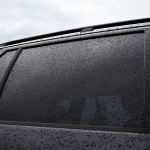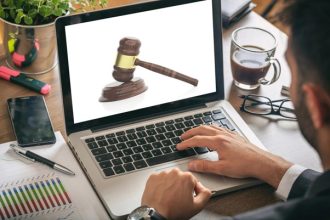With the boom of rideshare services like Uber and Lyft, riders across Nevada are enjoying unprecedented ease in getting from one point to another point. This increase in options has reshaped our travel habits, offering a mix of convenience and, at times, lower costs compared to traditional taxis.
However, the convenience comes with an uptick in complexities surrounding accidents involving these gigs. Determining fault and seeking compensation for injuries can be a challenge.
Ever wondered who’s to blame in a rideshare accident? Keep reading to find out.
Navigating the Twists and Turns of Rideshare Accidents
Traditional car accidents are typically between private individuals, making things somewhat straightforward. It usually comes down to which driver is at fault. However, things get a lot trickier with rideshares.
You have not only the drivers but also these massive companies that could potentially bear some responsibility. There’s also insurance. Rideshare apps provide coverage with specific conditions that kick in at different times during the ride.
Unpacking this layered setup requires delving deep into details—because every little piece influences where blame might land.
Identifying the Liable Parties in Rideshare Accidents
Several parties can be on the hook for rideshare accidents. Firstly, there is the driver. If they were reckless or not paying attention—like texting while driving—they are a major contender for being at fault. There are also the rideshare companies themselves. Say an accident happened because of some issue that should have been caught during the company’s background check or vehicle inspection—then you might also point your finger at them.
Poorly maintained roads or unclear signage could place some responsibility on local government bodies. So, determining liability often becomes a game of pinning down who dropped the ball and where.
Proving Whose Fault It Is
After a rideshare crash, proving who is at fault kicks off with some urgency. Firstly, get medical help if needed. Not only is your health paramount, but medical records can serve as solid evidence of the accident’s impact.
Next, start collecting data. Snap photos of the scene, get contact info from witnesses, and save every relevant piece–your ride details and communications with the ridesharing service are key elements here.
Teaming up with an experienced lawyer could level up your game; they will steer you through Nevada’s tricky laws and fight tooth and nail to prove liability where it belongs, so have one on your side.
Choosing the Right Rideshare Accident Lawyer in Nevada
Picking a rideshare accident lawyer is not just about grabbing any legal mind—you want one familiar with the specific nuances of rideshare laws in Nevada. Look for someone who has battled and won against big rideshare companies, proving they can navigate through complex liability issues effectively.
“Experience fighting major transport apps means the lawyer will know how these companies operate legally, ensuring better outcomes for victims,” says Nevada rideshare accident lawyer John Shook of Shook & Stone Personal Injury & Disability. This insider perspective illustrates that not all attorneys are built the same, expertise matters greatly when your fight involves heavyweight corporate policies.
Predicting the exact amount you will recover as compensation from a rideshare accident may not be possible, as factors influencing your payout include the severity of injuries, lost wages, and pain and suffering endured. Also, working with an attorney ensures that every possible dime is accounted for and fought for in your claim.














